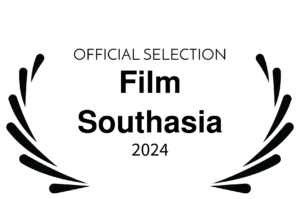Abundance: Living with a Forest
Projects
Abundance: Living with a Forest

Abundance: Living with a Forest (2024) is a biography of foraging, forest, and jhum cultivation. Nagaland is a hill state in Northeast India that is part of the Indo-Myanmar Biodiversity hotspot, where approximately 60% of the population depend on jhum cultivation. In recent decades, jhum cultivation has been recognized as a significant part of Indigenous knowledge systems. Foraging is a community practice where traditional knowledge and history of the land are passed down. Jhum and foraging are intrinsically linked to the forest.
The ongoing ceasefire between Naga armed groups and the government of India has led to a surge in development activities. Plantation, monocropping, and infrastructure activities across the mountains of Nagaland take place by clearing forests. The price of development and progress is to obliterate all connections with land and other beings.
Abundance: Living with a Forest follows Zareno, a Lotha forager in the forest of Khumtsü, and traces the foraged edible plants as they make their way to the market in Wokha town. The film gestures to an impending loss that Indigenous communities encounter across the world.
The documentary was all about teamwork. We hauled cameras, discussed scripts, and prayed to the weather gods during out outdoor shoots. We stopped on mountaintops to take drone shots, ate rice with foraged plants and discussed about frames and deadlines. We dreamt of the films we wanted to collaborate in the future. One day. The time will come to connect our desires and make a film that streamlines out dreams.
Abundance: Living with a Forest acknowledges the original compositions of Lotha Naga folk singer Mhalo Kikon and music artist Yanpothung Ezung.
Into the Woods:
Over the Horizon:
Tears in the Rain:
Anthropological Lens and Indigenous Ecology
As an anthropologist, my interest on Indigenous practices of fermentation inspired me to direct and produce Season of Life (2020). My first documentary film was an 11-minute story about fermented bamboo shoot and the people involved in sourcing, and preparing this delicacy that is popular in many Asian cuisines. That was the beginning of a journey with visual forms where I found new meaning in communicating research and the living world to a wider audience.
I learnt new vocabularies such as b-roll, transition, subtitle, film credit, story boarding, cut, footage, frame, sound, recording studio, drone footage, and ambiance. I also learnt that films are about light and sound, but what holds it together, among other things, is the element of telling a story about the world. As an anthropologist, my ethnographic writings are about extractive regimes, justice, and Indigenous worlds. Inside the texts, the voices are about life, connections, and care.
Abundance: Living with a Forest is about foraging and Indigenous worlds, but what makes this film possible are sound technicians, editors, camera persons, location team, farmers, knowledge keepers, and villagers. Film making and ethnographic writing are similar in some ways. It took us six months to edit the film. At the editing table, I learnt the power of editing films (like writing drafts of my books and articles), to manage the background noise, seek new compositions (from Indigenous artists) for the film, and to decide on transitions between interviews from the raw footage of the film. I realized that writing about lived realities have similar impact, but the pace and medium of film hit me hard. The power to decide what I choose to make visible, erase, and portray about social realities of Indigenous communities in both my documentary films was extremely palpable.
Decision-making power. The ability to choose the frame, quality, text, sounds, and image involves practicing responsibility. This means consciously making voices, practices, and values visible. The voices of foraging and foraging among Indigenous people connects us with ongoing extractive politics, hopes, desire, and resistance of Indigenous worlds.
Abundance: Living with a Forest presents Indigenous foraging practice in the Eastern Himalayan region, and the commitment of foragers and community members to work towards renewal of Indigenous values, courage, and sustainable practice.
How should we write about dreams, rage, and the future? Time. An image or an encounter is wrapped up in different frames. A paragraph describing a character last a mere few seconds in a film. Abundance: Living with a Forest presents the lifeline of Indigenous Naga world.
Trailer
Awards
